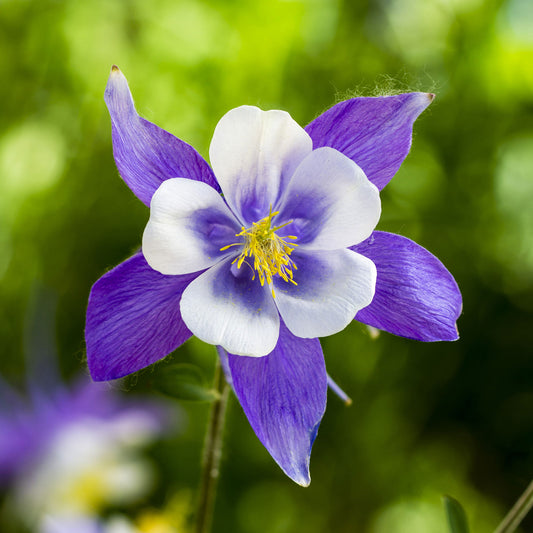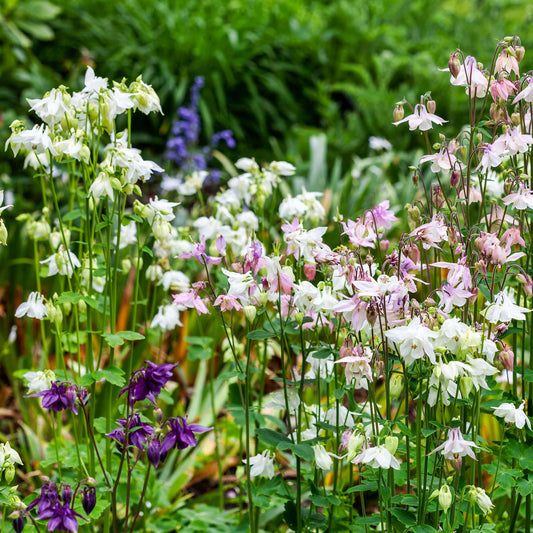-
main-collection-product-grid

Columbine Seeds - McKana Giant Mix
This colorful, whimsical mix attracts native pollinatorsColumbine Seeds - McKana Giant Mix
This colorful, whimsical mix attracts native pollinatorsRegular price As Low As $5.99Regular priceUnit price per -
main-collection-product-grid

Columbine Seeds - Blue Star
Dependable blue blooms for your perennial gardenColumbine Seeds - Blue Star
Dependable blue blooms for your perennial gardenRegular price As Low As $6.99Regular priceUnit price per -
main-collection-product-grid

Columbine Seeds - Rose Star
Vibrant, bicolored blooms thrive in the poorest soilsColumbine Seeds - Rose Star
Vibrant, bicolored blooms thrive in the poorest soilsRegular price As Low As $6.99Regular priceUnit price per -
main-collection-product-grid

Columbine Seeds - Tall Double Mix
Double the blooms and double the funColumbine Seeds - Tall Double Mix
Double the blooms and double the funRegular price As Low As $5.49Regular priceUnit price per -
main-collection-product-grid

Blue Columbine Seeds
A western wildflower that tolerates partial shade and cool tempsBlue Columbine Seeds
A western wildflower that tolerates partial shade and cool tempsRegular price As Low As $6.99Regular priceUnit price per -
main-collection-product-grid

Columbine Seeds - Crystal Star
Sturdy white flowers with an orchid-like appearanceColumbine Seeds - Crystal Star
Sturdy white flowers with an orchid-like appearanceRegular price As Low As $6.99Regular priceUnit price per -
main-collection-product-grid

Columbine Seeds - Barlow Mix
These spurless double blooms are a far cry from traditional columbineColumbine Seeds - Barlow Mix
These spurless double blooms are a far cry from traditional columbineRegular price As Low As $6.99Regular priceUnit price per -
main-collection-product-grid

Dwarf / European Columbine Mix Seeds
Compact plants add a pop of delicate color to tight spacesDwarf / European Columbine Mix Seeds
Compact plants add a pop of delicate color to tight spacesRegular price As Low As $5.49Regular priceUnit price per -
main-collection-product-grid

Columbine Seeds - Nora Barlow
RHS Award of Garden Merit winner, member of the Barlow seriesColumbine Seeds - Nora Barlow
RHS Award of Garden Merit winner, member of the Barlow seriesRegular price $5.99Regular priceUnit price per -
main-collection-product-grid

Columbine Seeds - Winky Double Rose White
Excellent uniformity of uniquely double, upward-facing flowers in mauve and creamOut of StockColumbine Seeds - Winky Double Rose White
Excellent uniformity of uniquely double, upward-facing flowers in mauve and creamRegular price $6.99Regular priceUnit price per
Planting the best columbine seeds
- 10 columbine seed varieties
- Offers an inviting fragrance that attracts bees, hummingbirds, and butterflies
- Prefers full sun to partial shade
- Easy to grow
The special features of columbine
Columbines, also called "Granny's Bonnet" or "Granny's Nightcap," are beautiful bell-shaped flowers that are known for attracting hummingbirds among other pollinators. Columbine comes from the Latin word columba, meaning "dove-like." Native to Asia, Europe, and North America, this herbaceous perennial has lovely clover-like foliage and is an airy plant. The flowers come in a variety of hues, and the majority of them have spurs, which are long, narrow strips that run horizontally from the back of each bloom.
Get the best columbine results
If starting your columbine seeds outdoors, sow three to four weeks before the last spring frost. If starting indoors, sow about six weeks before the last frost. Columbines prefer full sun to partial shade conditions and perform best in average, medium moisture, well-drained soils. For optimum results, place seeds in the refrigerator 24 hours before you sow your seeds. Gently place seeds on top of soil, being careful not to cover. Columbine seeds require direct light to germinate properly. Germination typically takes about 14 to 21 days.
It is best to transplant columbine on a cool, overcast day if possible. A few cool days right after transplanting allows columbine's roots to settle in easily. Harden off and gently transplant seedlings, or directly sow seeds in groups of three to four. Space seed groupings or transplanted seedlings approximately 16 inches apart, thinning transplanted seedlings to their strongest plant. Be sure to keep soil moist before and after germination. If foliage depreciates, cut back your plants to the ground. Keep in mind that columbine plants do not usually flower until the second or third blooming season. Remove flowering stems after bloom to encourage continuous growth. Columbines are generally short-lived blooms but will self-seed prolifically, forming large colonies of blooms.
Flowers to plant with columbine
Columbine flowers love to be planted near allium, daylily, foxglove, iris, peony, and poppy flowers! Additionally, they will thrive in beds or borders, rock gardens, cottage gardens, and shade gardens!
For more information about planting, growing, and caring for columbine flower seed, see the Columbine Seeds Planting Guide.









